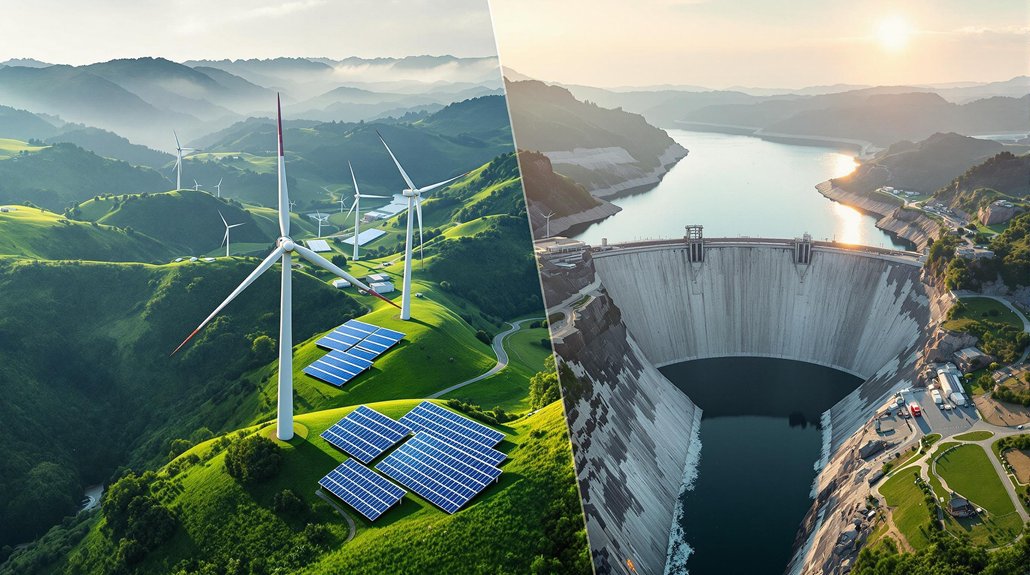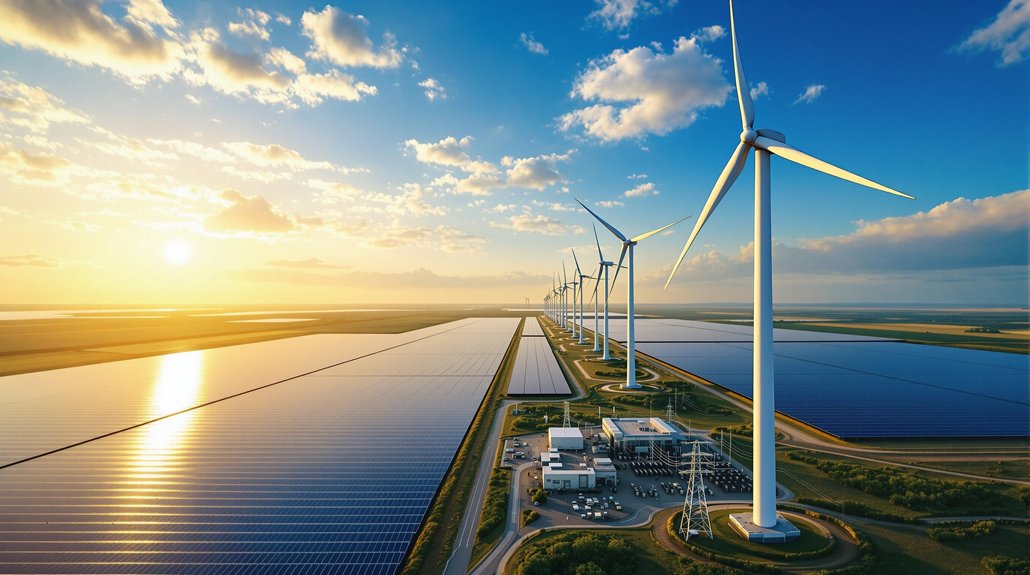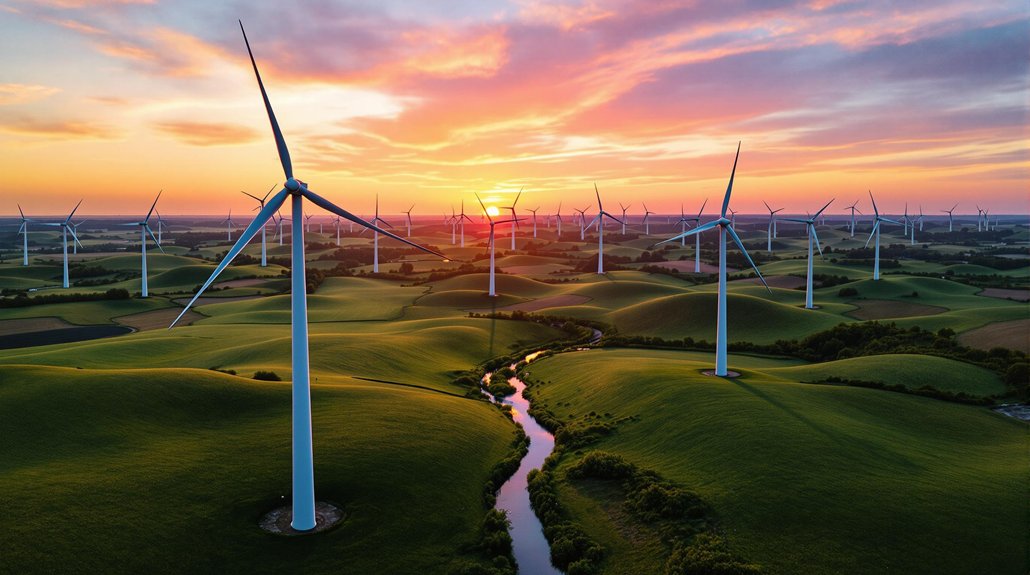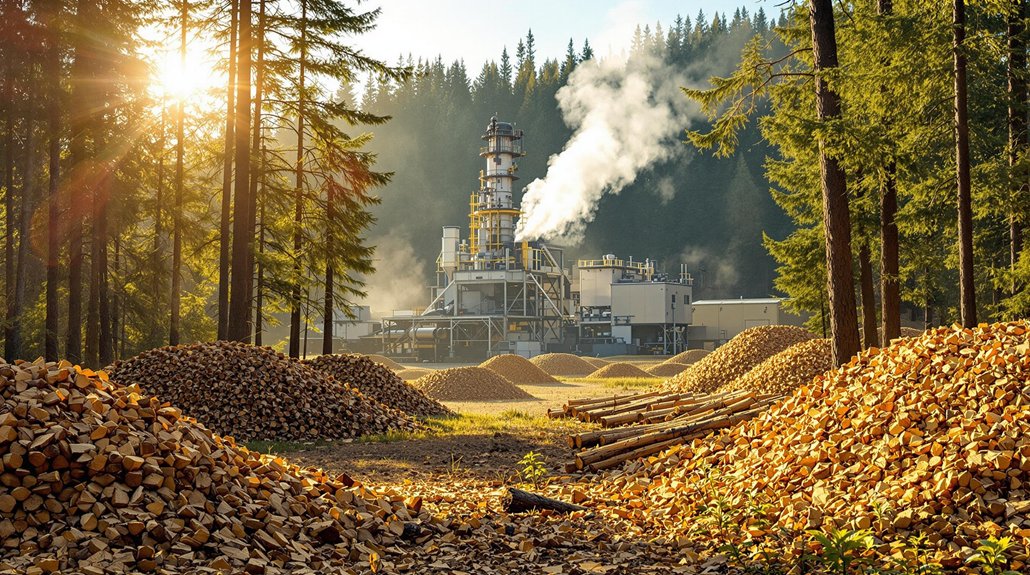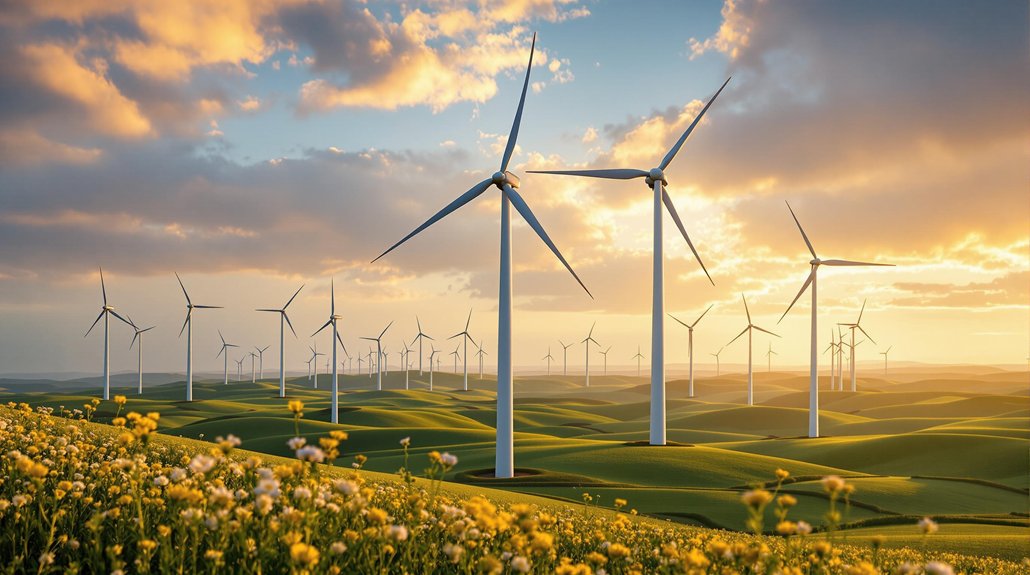Renewable energy comes from naturally replenishing sources like wind or solar, but it’s not always green. Green energy is a subset of renewable energy that causes minimal environmental harm throughout its lifecycle. While all green energy is renewable, not all renewable energy is green—large hydropower dams can damage ecosystems despite being renewable. Clean energy focuses on reducing greenhouse gases, with nuclear power considered clean but not renewable. Understanding these distinctions helps guide better energy choices.
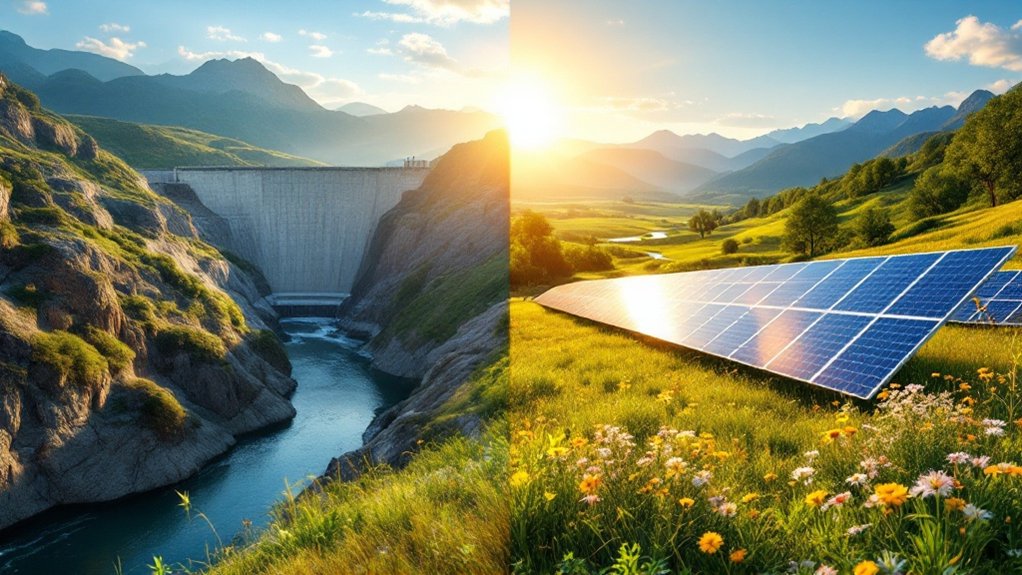
When people talk about clean energy, they often use the terms “green” and “renewable” interchangeably, but these concepts aren’t actually the same thing. While related, they have important differences that affect how we perceive our energy choices and their impacts on the environment.
Renewable energy comes from sources that naturally replenish themselves and don’t run out. These include solar power, wind power, hydropower from dams, biomass from plants, and geothermal energy from the earth’s heat. What makes them “renewable” is that they won’t be used up like coal or oil. Renewable energy sources are flow-limited in their capacity, meaning there’s a maximum amount that can be captured and utilized at any given time.
Nature’s infinite power sources—sun, wind, water, plants and earth—continue providing energy long after fossil fuels disappear.
Green energy is a special type of renewable energy. It’s defined by having minimal negative effects on the environment. While all green energy is renewable, not all renewable energy is green. For example, large hydropower dams are renewable because they use water that’s constantly replenished, but they aren’t always considered green because they can harm river ecosystems.
Clean energy focuses on reducing greenhouse gases that cause climate change. Nuclear power is considered clean because it doesn’t produce carbon emissions during operation, but it’s not renewable since uranium fuel is finite. Technological advances have made renewable sources increasingly important in achieving net-zero emissions targets worldwide.
The environmental impact of energy sources matters greatly when classifying them. Green energy aims to cause little harm to natural habitats, produce minimal waste, and have a small carbon footprint throughout its entire lifecycle—from creation to disposal. Green energy companies are committed to ecologically benign principles that prioritize both environmental protection and social responsibility.
Economics also plays a role in these energy choices. Renewable energy costs have fallen dramatically in recent years. Green energy sometimes requires higher initial investment but often provides greater long-term savings. Both sectors are creating new jobs as they grow.
Looking ahead, both renewable and green energy will help reduce dependence on fossil fuels. New technologies are making these energy sources more efficient and affordable. Energy storage solutions and smart grids are helping overcome challenges with variable sources like wind and solar.
As climate concerns grow, the distinction between these energy types becomes increasingly important for making informed decisions.
Frequently Asked Questions
Which Energy Source Has the Lowest Environmental Impact?
Determining the lowest environmental impact energy source isn’t straightforward. Each has advantages: solar produces no emissions during operation; wind requires minimal land; geothermal provides constant power with near-zero emissions; and nuclear has the highest energy density with no direct carbon emissions.
The “cleanest” option often depends on location, available resources, and specific environmental priorities. All four sources have considerably lower impacts than fossil fuels.
How Do Costs Compare Between Green and Renewable Energy?
Green energy sources typically cost more than some renewable options.
Solar and wind are now the cheapest energy sources in most places, with solar at $37-41/MWh and wind at $20/MWh.
Both are cheaper than fossil fuels like coal at $102/MWh and gas plants at $114/MWh.
While all renewable costs are falling, some options like nuclear and large hydro remain more expensive.
Can Nuclear Energy Be Considered Green?
Nuclear energy’s classification as “green” remains debated. It produces almost no carbon emissions during operation, similar to wind and solar power.
The EU has included nuclear as “green” under certain conditions. However, concerns about radioactive waste and uranium mining impact persist.
Nuclear energy helps combat climate change by providing stable, low-carbon power that can work alongside renewables to reduce global emissions.
What Government Incentives Exist for Different Energy Types?
Government incentives vary by energy type.
Solar and wind projects can receive 30% tax credits through the ITC program. Wind, biomass, and geothermal qualify for Production Tax Credits. Homeowners can claim up to 30% in tax credits for installing renewable systems.
States offer additional benefits like property tax exemptions and net metering. Grants and loans are available through programs like REAP.
Fossil fuels receive different subsidies, while nuclear has specialized support programs.
How Do Energy Storage Challenges Differ Between Sources?
Different energy sources face unique storage challenges.
Solar struggles with day-night cycles and battery costs.
Wind energy’s unpredictable patterns require flexible storage systems and often faces transmission constraints.
Hydroelectric storage needs suitable geography for pumped hydro facilities and faces environmental concerns.
Emerging technologies like flow batteries show promise but aren’t yet cost-effective at scale.
All storage solutions must overcome high initial costs and integration with existing infrastructure.
